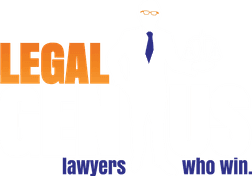
Table of Contents
Pregnancy is a time of great anticipation and hope for many families. However, it can quickly become fraught with fear when complications arise. This includes fetal distress, which is an indicator that the baby isn’t doing well.
Fetal distress refers to signs that an unborn baby is encountering medical difficulties, often due to inadequate oxygen supply or other complications during pregnancy or labor. It’s a condition that demands immediate attention to ensure the safety and well-being of both the expectant mother and the baby. When signs of fetal distress are mismanaged, overlooked, or inadequately addressed, healthcare providers could be held liable for medical malpractice.
At LegalGenius, PLLC, we help families hold healthcare providers accountable for their actions. If your infant was injured because your medical team didn’t properly respond to signs of fetal distress, we can help. Our birth injury lawyers have obtained significant settlements and verdicts for affected families and have the knowledge, resources, and experience to help you seek justice.
Understanding Fetal Distress
Fetal distress indicates that a fetus is not doing well during pregnancy or labor, often due to insufficient oxygen. Healthcare providers diagnose and monitor this condition using fetal heart rate monitoring and ultrasound. These methods help observe the baby’s heart rhythm and movements, thereby providing clues about the baby’s health status.
Causes
Fetal distress can happen for various reasons. One common cause is not enough oxygen reaching the baby. This can happen if the mother has high blood pressure or diabetes, which can limit blood flow. Sometimes the issue lies with the baby, such as when they’re not growing as expected or have congenital problems.
Another key factor is complications with the placenta or umbilical cord. For instance, the placenta might detach too early, a condition known as placental abruption, or the umbilical cord could get squeezed, cutting off the baby’s oxygen supply. Infections and prolonged labor also pose risks and can potentially lead to distress.
Doctors and healthcare teams are supposed to monitor these risks through pregnancy and delivery, with the goal of catching any signs of trouble early. By doing so, they aim to manage or prevent fetal distress, ensuring the safety and well-being of both the mother and the baby.
Signs and Symptoms
The signs and symptoms of fetal distress can alert expectant mothers and healthcare providers to potential problems. They include the conditions outlined below.
Abnormal Fetal Movement
Babies start moving in the womb during the second trimester. By the third, they’re actively kicking. If there’s any variation in this movement pattern, notify your healthcare provider immediately. A drop in the baby’s activity could mean they’re not getting enough oxygen.
Abnormal Fetal Heart Rate
A healthy fetus has a baseline heart rate between 110 and 160 beats per minute. Any variation, especially for extended periods of time, may indicate that something is wrong. For example, tachycardia occurs if the fetal heart rate goes above 160 beats per minute for extended periods of time while bradycardia, which happens when the fetal heart rate drops below 110 beats per minute, usually means that the fetus is not getting enough oxygen.
Meconium in Amniotic Fluid
When the amniotic sac breaks, the fluid is normally clear. If it is brown or green, fetal meconium (which is normally passed after birth as the infant’s first bowel movement), may be in it. Meconium in amniotic fluid can be a sign of fetal distress and your medical team should investigate right away.
Abnormal Fluid or Blood Discharge
Unusual discharge from the mother may indicate problems with the pregnancy. For example, a sudden flow of fluid could mean the water has broken early, potentially leading to premature labor. Blood may suggest placental issues, like placental abruption (where the placenta detaches from the womb wall too early) while meconium in the fluid can indicate that the baby is stressed and has passed stool while still in the womb.
Uterine Contractions With No Relaxation
Uterine contractions with no relaxation, known as tachysystole, can lead to fetal distress because they may reduce oxygen delivery to the baby. Normally, contractions help push the baby toward the birth canal, but there should be rest periods that allow the baby to receive oxygen. Without them, the baby’s oxygen supply can drop, putting them under stress. This condition requires immediate medical attention to ensure the well-being of both the baby and the mother, as it can lead to complications if not managed properly.
Recognizing these symptoms early allows for swift action, potentially preventing more serious complications for both the baby and the mother. When careful monitoring and treatment fail to occur, the impact can be extremely serious.
Impact on Mother and Baby
Fetal distress can significantly impact both the mother and the baby. For the baby, it might mean emergency interventions, such as a cesarean section, to prevent further stress. This condition can also lead to oxygen deprivation, affecting the baby’s development and health after birth. In severe cases, it may result in long-term issues like developmental delays.
For mothers, fetal distress can cause emotional stress and physical complications. The need for emergency procedures, like a cesarean section, increases the risk of infection and extends recovery time. Experiencing fetal distress can also have a lasting emotional impact, leading to feelings of worry about the baby’s health and future pregnancies.
What is ‘Non-Reassuring Fetal Status?’
Non-reassuring fetal status is a medical term that indicates a baby might not be getting enough oxygen. This term is sometimes used instead of “fetal distress” to describe situations like less movement from the baby, unusual patterns in the baby’s heart rate, meconium-stained fluid, or signs that the baby is not growing as expected.
It’s vital for your medical team to clearly explain any signs of non-reassuring fetal status to you. They should inform you if they believe your baby could be at risk and act immediately to protect both your health and that of the child.
Medical Malpractice and Fetal Distress
If healthcare providers do not monitor the baby’s health closely during pregnancy and labor, overlook signs of distress, or delay necessary actions to address these signs, it can lead to malpractice claims. Misreading fetal heart rates or ignoring the mother’s concerns are common examples of negligence.
To determine if your medical team missed signs of fetal distress, start by reviewing the care you received. If your baby suffered injuries and you suspect these were preventable, a detailed investigation is the next step. This process involves examining medical records, the actions of your healthcare professionals, and the legal standards for care.
When healthcare providers or institutions are found guilty of malpractice in fetal distress cases, they may face legal action to compensate the affected families for their losses and suffering. They could also encounter professional repercussions, such as losing their medical licenses or facing restrictions on their practice. These consequences underscore the importance of diligent and attentive care in managing the health of both mother and child during pregnancy and delivery.
Hiring a Medical Malpractice Lawyer
If you suspect your child’s fetal distress was misdiagnosed and therefore mishandled, consulting a medical malpractice lawyer is critical. This step is not just about seeking justice; it’s about ensuring your child receives the necessary support and care for their recovery and future well-being.
When searching for a medical malpractice lawyer, prioritize those with specific experience in birth injury cases. They should be well-versed in medical terminology and procedures related to childbirth and have a solid record of securing successful settlements or verdicts for their clients. This background ensures they can handle your case with confidence and precision.
Once you’ve hired a lawyer, they will investigate what happened, gather all relevant medical records, and secure expert testimonies to build a strong case. These experts can attest to the standard of care expected and pinpoint where the negligence occurred. Whether it’s a failure to respond to fetal tachycardia, bradycardia, or signs of umbilical cord compression, proving negligence is key.
Next, your lawyer will work on negotiating settlements with the responsible parties or, if necessary, prepare for trial. Throughout this process, they will make sure you stay informed at every stage. Their goal is not just to win your case but to secure compensation that covers all future medical procedures, therapies, and support your child might need to overcome the challenges posed by the birth injury.
Get a Free Consultation From a Michigan Birth Injury Lawyer
Understanding fetal distress and its implications is essential for expectant parents and healthcare providers alike. When signs of distress are overlooked, the consequences can be severe, impacting the health and well-being of both the mother and child.
If you believe your child suffered due to inadequate monitoring or mismanagement of fetal distress, you have rights and options. LegalGenius, PLLC stands ready to support families affected by such negligence. Our experienced birth injury lawyers can guide you through the process of seeking compensation that secures your child’s future. For more information or to schedule your free consultation, fill out our Ask the Genius™ form or call (800) 209-4000 today.

Attorney Jeffrey Perlman
Attorney Jeffrey Perlamn is the managing partner at LegalGenius, PLLC. He has helped Metro Detroit accident victims recover the compensation they deserve for over 35 years. He believes everyone should have access to justice and the legal system, which is why Attorney Perlman spends his time outside of the courtroom writing informational blogs on the LegalGenius website that are accessible to all.


